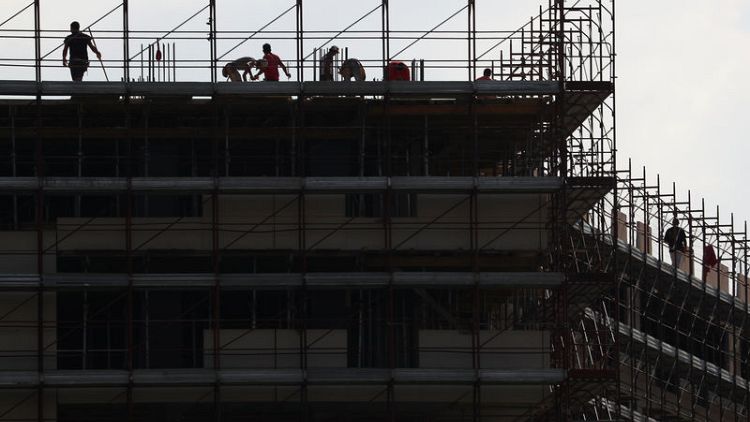By Crispian Balmer
ROME (Reuters) - Italy's economy returned to growth in the first quarter of the year, pulling clear of its third recession in a decade, while the unemployment rate receded in March, data showed on Tuesday.
Gross domestic product rose a quarterly 0.2 percent between January and March, and was up 0.1 percent on an annual basis, national statistics bureau ISTAT reported.
Italian GDP had fallen 0.1 percent in both the third and fourth quarters of last year, putting the euro zone's third largest economy into what economists often call a technical recession of two straight quarters of shrinking output.
The swift return to growth, however tepid, was hailed by the coalition government, which is struggling to keep a lid on both the budget deficit and state debt as it seeks to fulfil election campaign pledges to boost welfare spending.
ISTAT also reported on Tuesday a fall in unemployment in March, with the jobless rate dropping to 10.2 percent from a previous 10.5 percent and youth unemployment down to 30.2 percent -- its lowest reading since October 2011.
Some 60,000 jobs were created last month, while the overall employment rate climbed to 58.9 percent in March from 58.6 percent in February -- its highest level since April 2008.
"These numbers testify to the solidity and stability of the Italian economy," Economy Minister Giovanni Tria said.
The first quarter GDP data beat the average forecast in a Reuters survey of analysts of a 0.1 percent rise quarter-on-quarter and a 0.1 percent decline year-on-year.
Italy once again lagged its euro zone peers, however, with the EU statistics office Eurostat saying economic growth in the 19-nation currency bloc had risen 0.4 percent quarter-on-quarter in the first three months of 2019.
ISTAT gave no numerical breakdown of components with its preliminary estimate, but said industry, services and agriculture had all shown an increase in activity, with exports helping revive growth.
By contrast weak domestic demand had had a negative impact.
"The Italian economy came out of recession at the start of 2019 in better shape than expected. It is likely that the current quarter may be less dynamic, but the cycle's minimum seems to be behind us," said Paolo Mameli with Intesa Sanpaolo.
Data released last month showed that the fall in Italy's fourth quarter GDP was primarily due to a sharp reduction in inventories, while exports, consumer spending and investments all expanded at the end of last year.
Earlier this month, the government of the anti-establishment 5-Star Movement and the right-wing League was forced to slash its forecast for full-year growth to 0.2 percent from a previous target of 1.0 percent.
But Tria said on Tuesday the first quarter data suggested the economy could beat the new forecast so long as the international context proves "moderately favourable".
(Reporting by Crispian Balmer; Editing by Catherine Evans)



